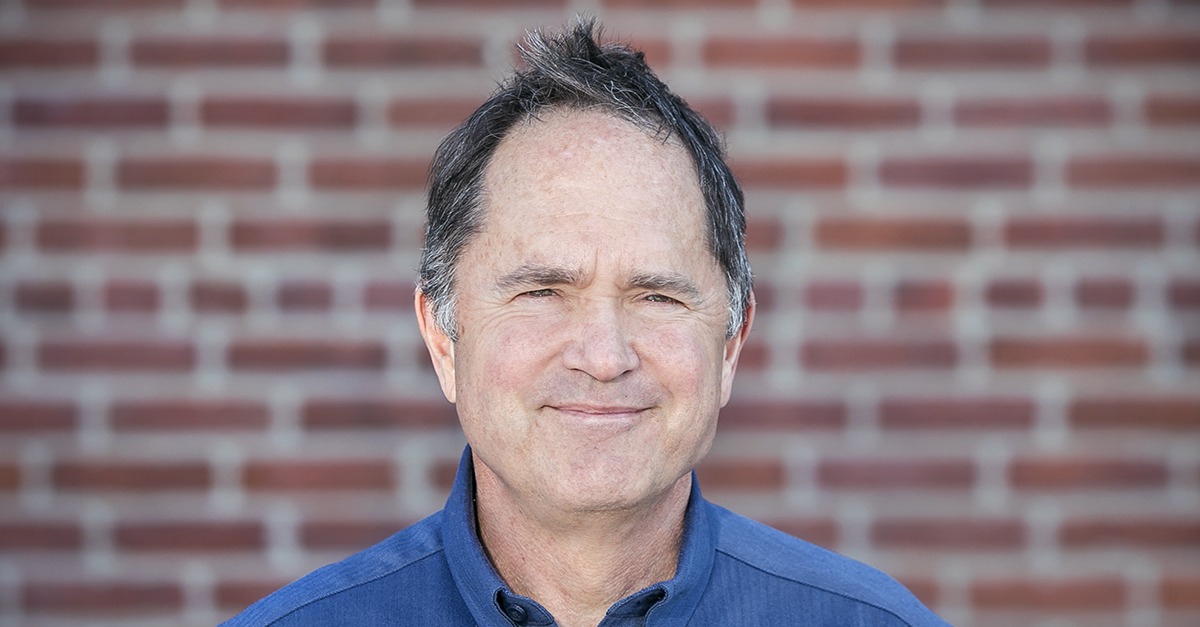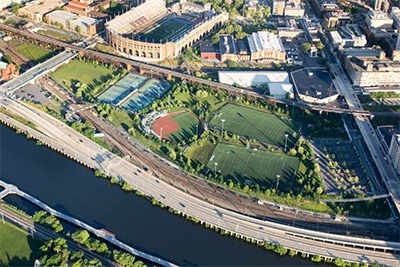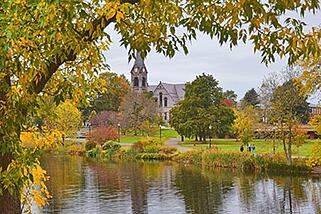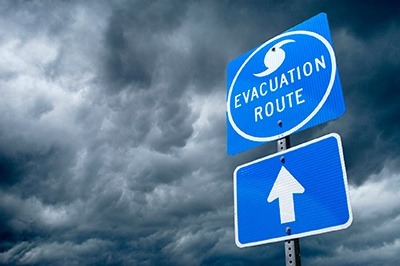Hydrogeologist John Kastrinos has served Haley & Aldrich clients for nearly 40 years. He began advising on the design and installation of commercial geothermal heating and cooling systems (known more precisely as ground-source heat exchange, or GSHE, systems) in the early 2000s as universities, healthcare campuses, and other clients began expanding their interest in reducing their carbon footprint through renewable energy.
GSHE systems pump water (or a mix of water and glycol) through a series of buried pipes called loops, which are installed in boreholes that extend hundreds of feet deep. These systems move heat from the circulating fluids into buildings for heating. For cooling, they dispel heat from the building into the ground. With his hydrogeology expertise, John helps clients understand the subsurface conditions essential to the design of GSHE systems, including rock type, depth to rock, and groundwater movement.
The northeastern United States is particularly well suited to GSHE systems because buildings typically need to be both heated and cooled, which allows engineers to build a system that is balanced between thermal extraction for heating and heat rejection for cooling — a key design objective. Also, the depth to bedrock is fairly shallow in most areas, and most of that bedrock is dense and crystalline — both good conditions for efficient thermal exchange.
Tell us about a few interesting projects you have worked on recently.
I recently managed two challenging projects in Boston: an iconic church in the center of the city and Boston University’s innovative, fossil-fuel-free Center for Computing and Data Sciences.
At the church, we faced some challenges related to converting an existing open geothermal system, which regularly pumps in clean water, to a closed system, which is filled once with a heat transfer solution that then circulates through loops. We had to extract or drill out existing liner pipe materials, then replace them with closed-loop exchangers, and we worried that the boreholes would collapse in on themselves during this procedure. But the contractor used some creative methods that allowed us to extract the pipe quickly, leaving little time for the borehole sidewalls to settle and potentially collapse.
For the Boston University Center for Computing and Data Sciences (BUCCDS) building, which opened in 2022, we managed the design and installation of more than 30 geothermal heat exchange loops to depths of 1,500 feet — almost one-third of a mile — making it the deepest geothermal heating and cooling system in the United States when we built it.
Drilling so deep increases the potential that the boreholes will deviate from their charted courses and collide. We used greater spacing between the boreholes to avoid this. BU used a concurrent design approach for testing, working with three different contractors to compare different methods for minimizing borehole deviation and the flow of groundwater into the boreholes. Lessons learned from that testing program facilitated an efficient and successful installation of the production bore-field (the area where the construction crew drills the boreholes and installs the pipes).
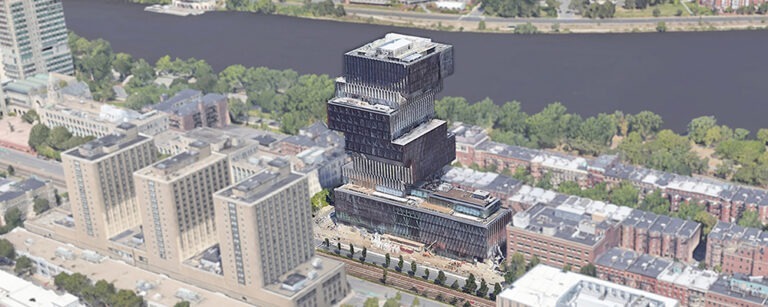
What are clients hoping to achieve by installing commercial geothermal systems?
Many states have enacted very ambitious goals for reducing carbon emissions, and many of our clients are schools — often schools serving municipalities that, in some cases, have their own carbon reduction goals. We also advise many universities, which have a great interest in meeting these goals not only because it’s a good thing to do but also because students care about what steps their schools are taking to reduce carbon emissions.
Geothermal systems also mesh seamlessly with our clients’ initiatives to improve energy efficiency, as geothermal serves low-temperature heating applications that are far more efficient than the high-temperature systems that are typically driven by fossil-fuel-fired boilers.
How do you help clients plan for and install commercial geothermal systems?
We assist with all aspects of the planning, permitting, and coordination of drilling projects to support geothermal heating and cooling. Given that most of our clients have never done a geothermal heating and cooling system, we usually start with a feasibility study to help determine whether ground source heat exchange makes sense for their site before they make the sizable investment in geothermal drilling and testing.
At Haley & Aldrich, we draw on our experience in fractured rock hydrogeology to help clients understand what’s involved in building and designing the system, including the noisy, muddy process of drilling deep boreholes in bedrock. We help clients prepare and plan for the disruption during drilling and system installation — a necessary by-product of the move to decarbonize their buildings or campus.
Using published information, geotechnical data, and data derived from the drilling and testing program, Haley & Aldrich designs the bore-field — including the number of boreholes; their depth, type, and spacing; and piping configuration. We also handle construction administration, and we routinely monitor contractors’ work in the field to ensure the system will operate consistently with the design.
Talk about a project you’re proud of.
We developed the closed-loop geothermal heating and cooling system for the new headquarters for the Massachusetts Division of Fisheries and Wildlife in Westborough, Massachusetts, which is one of the state’s first commercial zero-net-energy buildings.
The building is notable not only for its sustainability credentials but also for its beautiful architecture, which mirrors the program’s mission — there’s a stream running through it! I’m proud that our geothermal system was an integral step in achieving their ambitious net-zero sustainability goal.
Published: 5/19/2023
- Education, healthcare, and cultural institutions
- Healthcare
- Higher education
- K-12 and independent schools
- Real estate developers
- Geothermal
- Sustainability
- Geotechnical engineering
- Water resources
- Groundwater
Author
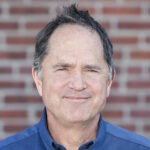
Senior Associate, Hydrogeology
